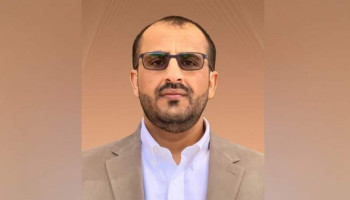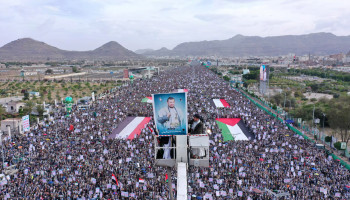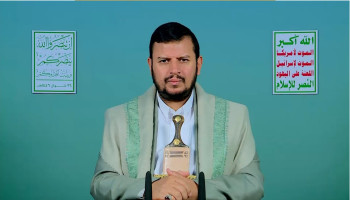After more than four months, the repercussions of the Yemeni Armed Forces attack, against the Abqaiq and Khurais refineries of the Saudi oil giant Aramco, are still continuing.
According to Reuters, South Korea's third-biggest refiner, S-Oi confirmed, Wednesday, that it has signed a one-year contract to supply a total of 3.1 trillion won ($2.66 billion) of refined oil products to Saudi Aramco's trading arm.
An organizational disclosure shows that the Korean company will supply up to 10 million barrels of diesel, up to 15 million barrels of naphtha, up to 11 million barrels of jet fuel and up to 8 million barrels of gasoline to Aramco Trading Singapore under the contract, valid between Jan. 1 and Dec. 31, 2020. This had not been without the decline in production in Saudi oil refineries after the Abqaiq and Khurais attack by Yemen on the 14th of last September.
Saudi oil giant Aramco suffers from production problems, following attack carried out by the Air Force of the Yemeni Armed Forces on the 14th of last September, with ten drones against the Abqaiq and Khurais oil facilities of the company. The operation, called the 2nd Operation of Balanced Deterrence, was in response to the crimes of the US-Saudi aggression against Yemen that has been going on for five years.
Immediately after the attack, Saudi Arabia resorted to the global market to discuss opportunities to purchase petroleum products to cover the deficit, including diesel, gasoline and fuel oil. It was forced to make changes to the types of crude oil it offers to its international customers, introducing heavy Arab crude instead of light Arab crude. The giant of the Saudi economy, Armco, also requested a loan in excess of one billion dollars.
Middle East Eye reported last October that Saudi Arabia has lost about $2bn in crude production in the aftermath of the attacks on its oil plants last month, confirming that the country suffered a major setback from the attacks and Aramco sustained a production cut equivalent to 5 percent of the world's oil supply.
In the same month, the World Bank expected that the attacks on Saudi Arabia’s oil facilities would impact economic growth this year, adding that Saudi Arabia’s gross domestic product (GDP) growth this year is forecast at 0.8%, down from an earlier World Bank estimate of 1.7% in April, pressured by oil production cuts and a worsening global outlook, according to the bank’s report.
In a next step, after postponing more than once, Saudi Arabia offered shares for Aramco for sale, taking advantage of President Mahdi Al-Mashat’s initiative, which he launched on the occasion of the 5th anniversary of the 21st September revolution,to stop missile and drone strikes on the Saudi rear, waiting for a Saudi response to the initiative. It seems that this is the last chance for the aggression to stop harming Yemen.
As Saudi Arabia benefit from the initiative, it did not show any response to it, which prompted Yemeni Minister of Defense, Brigadier General Mohamed Al-Atefi, to announce on 8th December that the Yemeni Armed Forces have completed all aspects of construction that qualify them to launch a comprehensive strategic attack that cripples the enemy's capabilities. He indicated that the combat readiness is much more than what was before the initiative that was launched from a position of strength, stressing that the Yemeni military industries are going in a race against time to an amazing degree and a level that is not comparable even with the countries that preceded us in this field by tens of years, with Yemeni expertise and technical personnel.
For his part, the spokesman of the armed forces, Brigadier General Yahya Sare’e, during a press conference held in the capital, Sana'a, pointed to the strategy of the Armed Forces to strike the depth of the aggression countries if they did not comply with the peace initiative launched by President Al-Mashat. He stressed that this strategy includes "the expansion of the targets bank of our forces to include vital and sensitive centers in the aggression countries, dividing the targets into 3 levels according to importance."
He said that among the first targets level of the Targets Bank, there are 9 very important targets, including six in Saudi Arabia and three in the UAE, stressing that "continuing to target our people and our country means the continuation of our forces in a legitimate and appropriate response with painful strikes. He added that the Armed Forces are today stronger than what they were, and will be more powerful than what they are now.
It seems that hitting Aramco facilities in 2019 will be only the beginning of the painful attacks on the depth of Saudi Arabia and the beginning of the implementation of the strategic steps promised by the Leader of the Revolution, Sayyed Abdulmalik Badr Al-Din Al-Houthi. The aggression and its tools must receive the strikes of "great pain" this year. Also, Saudi Arabia will move beyond the budget deficit stage, in 2020, to the stage of complete “paralysis” promised by Supreme Council member Mohammad Ali Al-Houthi if it does not comply with the Sana’a peace initiative.







